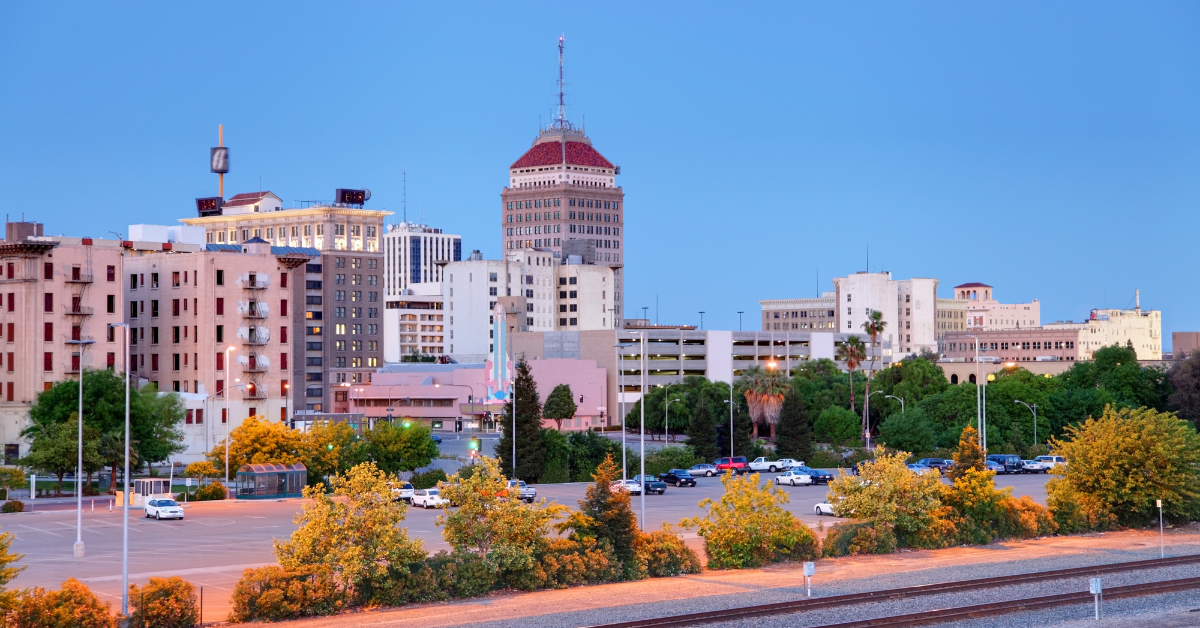Fresno, located in California, is a city recognized for its agriculture and history of Japanese immigrants. In Japanese, it is written as “フレズノ” in katakana, and no standardized kanji form exists. This absence reflects the broader trend in representing foreign place names. For Japanese people, Fresno carries unique images of agriculture, education, and cultural connections.
Japanese Representation of Fresno
The English word “Fresno” is typically transcribed into Japanese as “フレズノ.” There is no official kanji form, and dictionaries or travel guides consistently use katakana.
The city’s name originates from the Spanish word for “white ash tree” (Fresno). In theory, kanji such as “白樫” (white oak) or “トネリコ” (Japanese ash) could be used, but they have never spread widely. The main reason is that international standardization of place names has favored katakana representation for clarity.
Examples of Foreign Place Names
| City | Japanese Representation | Kanji Used |
|---|---|---|
| Fresno | フレズノ | None |
| San Francisco | サンフランシスコ | None |
| Los Angeles | ロサンゼルス | None |
| New York | ニューヨーク | None |
| Beijing | ペキン / 北京 | Yes |
How Japanese People View Fresno
Fresno as an Agricultural Hub
Fresno lies in California’s Central Valley, one of the largest agricultural regions in the United States, often called “America’s food basket.” Grapes, almonds, and citrus fruits are produced in abundance, and many are exported to Japan. Thus, the association of Fresno as an “agricultural city” is strong among Japanese people.
| Main Crops | Scale of Production | Impact on Japan |
|---|---|---|
| Grapes | Among the world’s largest producers of wine and raisins | Used in Japanese wine and confectionery |
| Almonds | About 80% of U.S. production | Supplies much of Japan’s imported nuts |
| Citrus Fruits | Large amounts of oranges and lemons | Stable supply to the Japanese market |
Its role as a global agricultural hub directly shapes Japanese perceptions of Fresno.
Fresno as a Center for Education and Study Abroad
Fresno State University and other institutions make the city known for education. Compared to Los Angeles or San Francisco, Fresno offers a calmer environment, and lower living costs make it attractive for Japanese students.
| Factor | Fresno | Major Cities (LA / SF) |
|---|---|---|
| Tuition Fees | Relatively affordable | Expensive |
| Living Costs | Lower | High |
| Study Environment | Quiet and focused | Stimulating but noisy |
| Number of Japanese Students | Fewer, tighter community | Many, but dispersed |
For Japanese people, Fresno is associated with “a safe and affordable place to study.”
Fresno as a Gateway to Tourism
Fresno is not famous as a tourist city itself, but it serves as a gateway to Yosemite National Park and Sequoia National Park. For travelers seeking nature, Fresno functions as a vital base.
| Destination | Distance from Fresno | Features |
|---|---|---|
| Yosemite National Park | About 2 hours by car | UNESCO World Heritage natural wonder |
| Sequoia National Park | About 1.5 hours by car | Forests of giant sequoias |
| Kings Canyon | About 2 hours by car | Valleys and waterfalls |
Japanese people often see Fresno as an “entry point to nature tourism” rather than a standalone attraction.
Fresno’s History and Japanese American Presence
Many Japanese immigrants settled in Fresno before World War II, contributing greatly to agriculture. During the war, they endured internment, but afterward, they remained and helped preserve Japanese culture in the region.
| Field | Contributions |
|---|---|
| Agriculture | Vineyard and orchard cultivation |
| Education | Second and third generations excelling in schools |
| Culture | Japanese cuisine and festivals enriching the community |
Because of this history, Fresno holds a place in Japanese minds as “a city where Japanese heritage lives on.”
Daily Life and Living Environment
Compared with California’s big cities, Fresno has lower living costs and more affordable housing. For Japanese residents, this means Fresno is “a city where you can live calmly and securely.”
Distinct Features of Life in Fresno
- Surrounded by nature, offering a relaxed atmosphere
- A car-centered lifestyle, convenient for moving around
- Safer than larger urban centers
- Rent about half that of Los Angeles
For students and long-term residents, Fresno’s safety and affordability are key attractions.
Conclusion
Fresno does not have a common kanji form in Japanese and is consistently written in katakana as フレズノ. For Japanese people, Fresno is remembered as an agricultural hub, a study-abroad destination, a base for tourism, and a city shaped by Japanese American history.
While it lacks the glamor of Los Angeles or San Francisco, Fresno is valued as a practical, historic, and nature-connected city that leaves a distinct impression on Japanese people. It continues to be seen as “a city linking everyday life with learning and heritage.”






